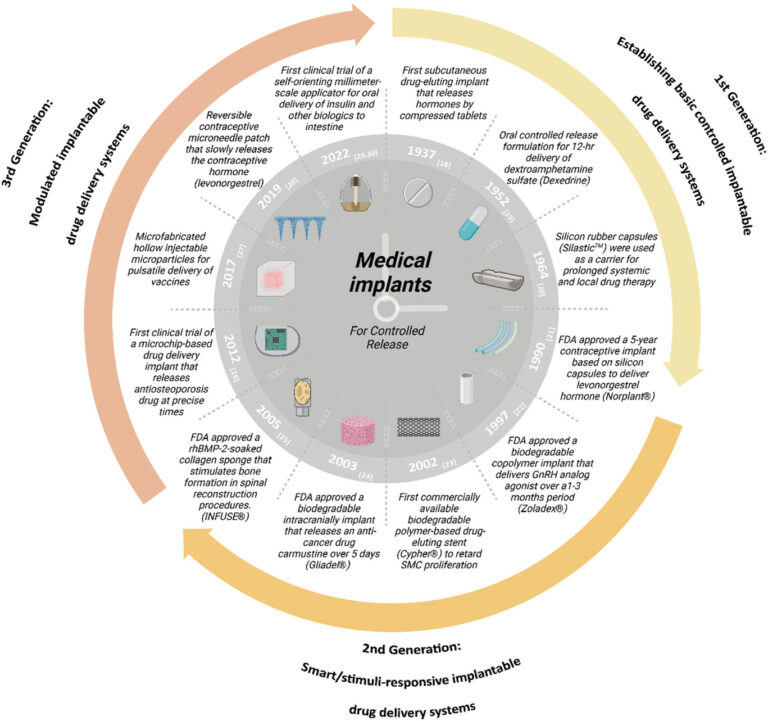
The application of structures that allow for the localised release of bioactive molecules can result in more effective disease treatment and improved integration of implantable bionic devices. Dr Sepehr Talebian and Prof. Fariba Dehghani of the University of Sydney, Prof. Gordon Wallace of the University of Wollongong, and Prof. Conde of the Universidade Nova de Lisboa led a team of researchers who published a review paper detailing the most recent advances in drug delivery from biomedical implants. A biopolymeric coating’s strategic design can be used to engineer the optimal release profile based on the task at hand.
The biopolymeric coating systems used to facilitate therapeutic delivery from bone, cardiovascular, ocular, and neural implants are discussed in this paper. They focused on these areas to demonstrate that controlled localised delivery can benefit hard and soft tissue implants. The composition of biopolymers used to achieve proper delivery to the selected tissue types and their associated outcomes are highlighted.
Controlled therapeutic release from medical implants has been used to accomplish one or more of the following goals: to assist implant integration, to reduce host tissue inflammation, and/or to avoid implant-associated infections. Coating implants with drug-loaded multifunctional biopolymers enables for precise control over therapeutic local release, resulting in improved implant performance and integration within the host tissue.
Choosing a biopolymeric coating might be a difficult undertaking. To enhance implant integration, the coating must create a surface that matches the physicochemical characteristics of the host tissue while simultaneously providing an environment that allows for high drug loading capacity and the optimal drug delivery profile over time. Biomaterials for certain bone implants, for example, should be resistant to deformation and capable of supporting large weights. At the same time, the material must be flexible to prevent cracking when subjected to strain, as well as light to allow movement. The biomaterial coating or sheathing of neural microelectrode implants should favour neurite development towards the electrode surface while preventing the recruitment of glial cells and fibroblasts, which may lead to glial scarring and compromise activity.
The creation of novel biopolymeric entities will decide the future direction of medical implant delivery. Considering the necessity of therapeutic cellular penetration, nanogels capable of dissolving into nanoparticles are a suitable choice for surface coating implants. Targeting moieties may be added to these nanogels to selectively target certain cell types inside the tissue. Additionally, theranostic nanogels (including the therapeutic, targeted ligands, and an imaging component) may be utilised for both diagnostic and therapy simultaneously.
Another developing field of study within biopolymeric coating of implants is the use of antimicrobial polypeptides in conjunction with antibiotics. Since most bacteria may restrict antibiotic intracellular accumulation, membrane-active antibacterial polypeptides can be employed as an encapsulating matrix to produce synergistic effects.
Biopolymers that are responsive to both internal and exterior stimuli have been successfully exploited to enable treatments to be released on demand. Yet, in order for these biopolymeric coatings to be effective in clinical applications, they must meet a number of criteria. When implanted, they should be harmless and not cause irritation. The degradation profile of the biopolymer must be tailored to the individual application in order for it to remain in the implanted place for as long as necessary while gradually degrading into safe subunits when no longer required. The biopolymeric coating should be simple to apply and refillable for repeated administration.
Finally, this review article emphasises advances in drug delivery from biomedical implants as well as the significance of biopolymeric materials.
This research was published in Advance Science and can be found here: https://doi.org/10.1002/advs.202207603